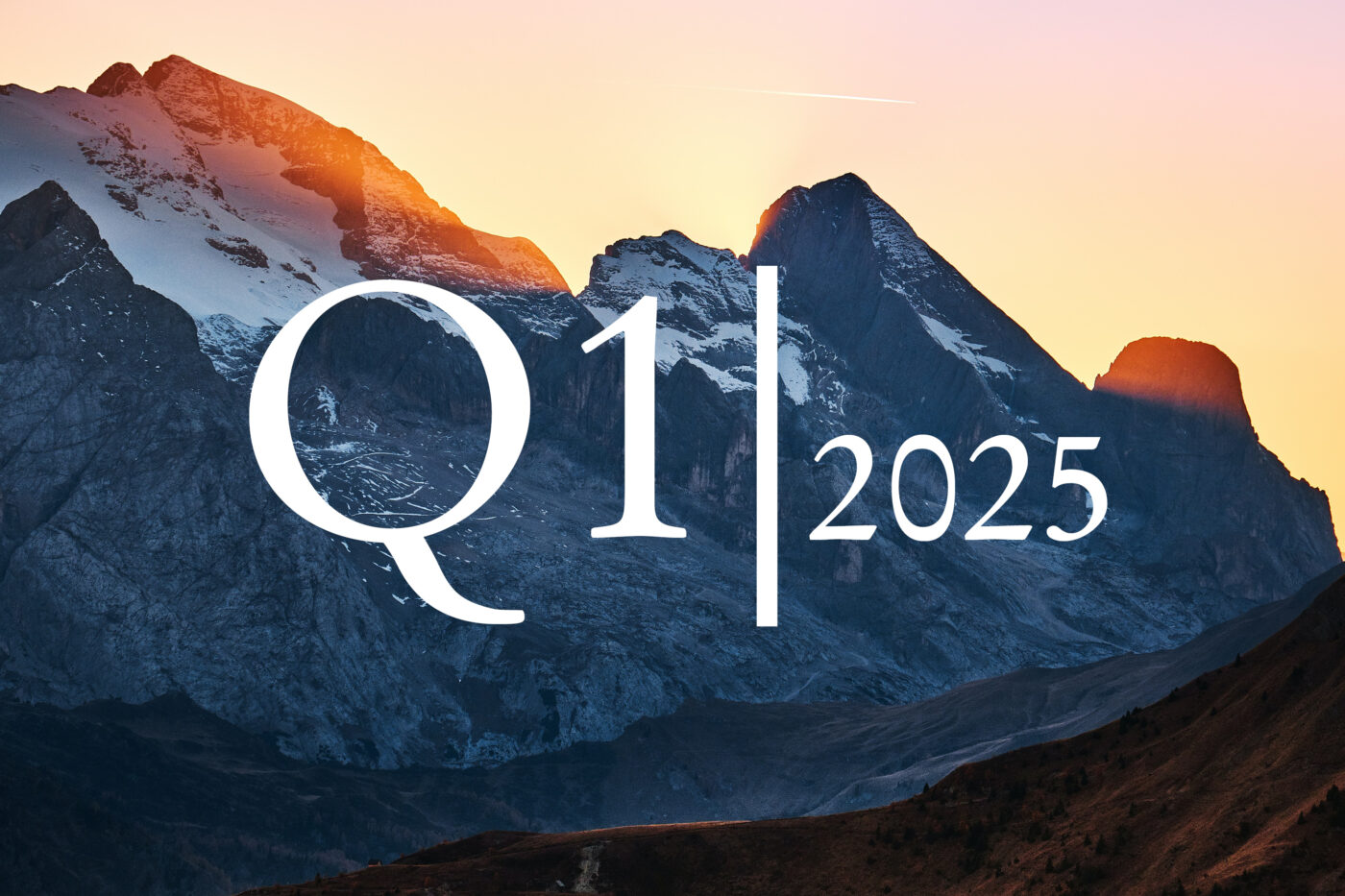In a nutshell
Equity indices should still have moderate upside potential until the end of the year. However, further significant increases in valuations are unlikely, especially in the US.
Small caps offer more potential, also supported by increasing M&A activity.
Our focus is on high-quality growth stocks with high earnings growth rates. We continue to find value regions such as Latin America attractive for diversification reasons.
Favourable start to the year
Continued robust US macro data and positive economic surprises for Japan and the eurozone have led to a continuation of the bull market in equities, supported by eased financial conditions and a solid earnings season. However, rising real yields due to increasing inflation risks and the pricing out of central bank rate cuts were, at least superficially, ignored by the market. In contrast to the year-end rally, however, market breadth has declined again. Interest-rate-sensitive small caps have lagged their large cap counterparts so far this year.
Mixed revisions to earnings expectations
Although the Q4 reporting season has surprised on the upside overall, changes in earnings expectations for 2024 are mixed. Japan in particular is benefiting from the weak yen and has received the largest positive earnings revisions. In the case of US equities, the AI winners in particular have seen their earnings estimates rise, with the result that aggregate EPS estimates for the S&P 500 have risen at least slightly. By contrast, negative earnings revisions dominated in Europe and emerging markets. With interest rates and wages still high and commodity prices on the rise again, we continue to believe that corporate earnings will struggle to surprise on the upside this year.
Further valuation expansion in the US limited
The recent bull market has been strongly driven by valuations,
despite rising interest rates, which is rather unusual. The forward P/E for the S&P 500 is now back at just under 21 (90th percentile over the past 10 years), well above the historical average of 17. In addition to hopes of higher long-term profits from the AI
revolution, one driver has been the continued inflows into US technology – the only equity sector to see massive inflows in recent months, thanks to the AI euphoria. In addition, systematic
strategies have continued to increase their equity exposure,
especially risk-parity strategies, due to the falling correlation
between equities and bonds. Given the already high positioning of non-fundamental investors, we believe that the potential for a
significant rise in valuations is limited, even in the event of central bank rate cuts. By contrast, other segments such as European
equities and small caps are cheap relative to their own history. If our economists are right and European growth accelerates from the second quarter of 2024, not only earnings but also valuations of European companies should rise.
It has been a good start to the year for most equity regions – Japan leads YTD, followed by the EuroStoxx 50 and the S&P 500
Market breadth likely to increase as year progresses
We see opportunities mainly below the surface. For example, we like healthcare companies, which are benefiting from several
megatrends such as the ageing population and digitalisation. We believe small caps with healthy balance sheets have catch-up potential. This is supported by favourable valuations, increasing M&A activity and stabilising interest rates. Our focus remains on high-quality European growth stocks, which should benefit from their above-average earnings growth rates. We like “value” regions such as Latin America for diversification, as a cyclical play and because commodity stocks, which are relatively well represented in the index, have risen significantly less than commodities themselves. At the same time, the US equity market should remain relatively supported despite its high valuation. In addition to the stronger US economy, lower energy costs and more innovative companies, this is mainly because the mega-caps are still the most supported by non-fundamental inflows (ETFs, options, buybacks). Overall, we see only moderate upside potential for equity indices until the end of the year due to positioning and valuation. The probability of a pullback over the summer has increased significantly, in line with typical seasonality. This is especially true as the US presidential election campaign enters its hot phase. This will naturally lead to some volatility in the markets.
Volatility likely to increase over the summer
Seasonality suggests volatility in the run-up to the US elections, before the S&P 500 picks up again after the elections as uncertainty decreases
Forecast overview: moderate upside potential
Berenberg and consensus forecast in comparison, values at the end of 2024 and mid-2025
What is on companies' minds?
New dynamics in many sectors
In our discussions with companies at conferences and one-on-one meetings, decision-makers were largely optimistic. Healthcare companies such as Novo Nordisk and Eli Lilly point to continued dynamic growth in obesity treatments. In the life sciences sector, although inventories are being reduced, a turnaround in customer ordering behaviour has yet to materialise, while the financing environment in the biotech sector appears to be slowly improving. On the other hand, we are hearing from the private equity sector that fundraising remains difficult, but that well-established strategies with a strong track record are still in demand. Disinvestments are likely to pick up again this year. The storage market is showing the first signs of recovery, driven by strong demand from the artificial intelligence sector. Companies in the automotive sector are also cautiously optimistic as inventories have been well reduced. Demand for electric cars is expected to increase in Europe, especially in the southern countries. After a short period of weakness in the luxury market, the fourth quarter saw a significant increase in demand, which continued into early 2024.
- Matthias Born, CIO Equities
Author

Ulrich Urbahn
Ulrich Urbahn has been working for Berenberg since October 2017 and is responsible for quantitative analyses and the devel-opment of strategic and tactical allocation ideas, and is involved in capital market communications. He is a member of the Asset Allocation Committee and portfolio manager of the Berenberg Variato. After graduating in economics and mathematics from the University of Heidelberg, he worked for more than 10 years at Commerzbank, among others, as a senior cross asset strate-gist. Mr Urbahn is a CFA charterholder and was part of the three best multi-asset research teams worldwide in the renowned Extel survey for many years.



